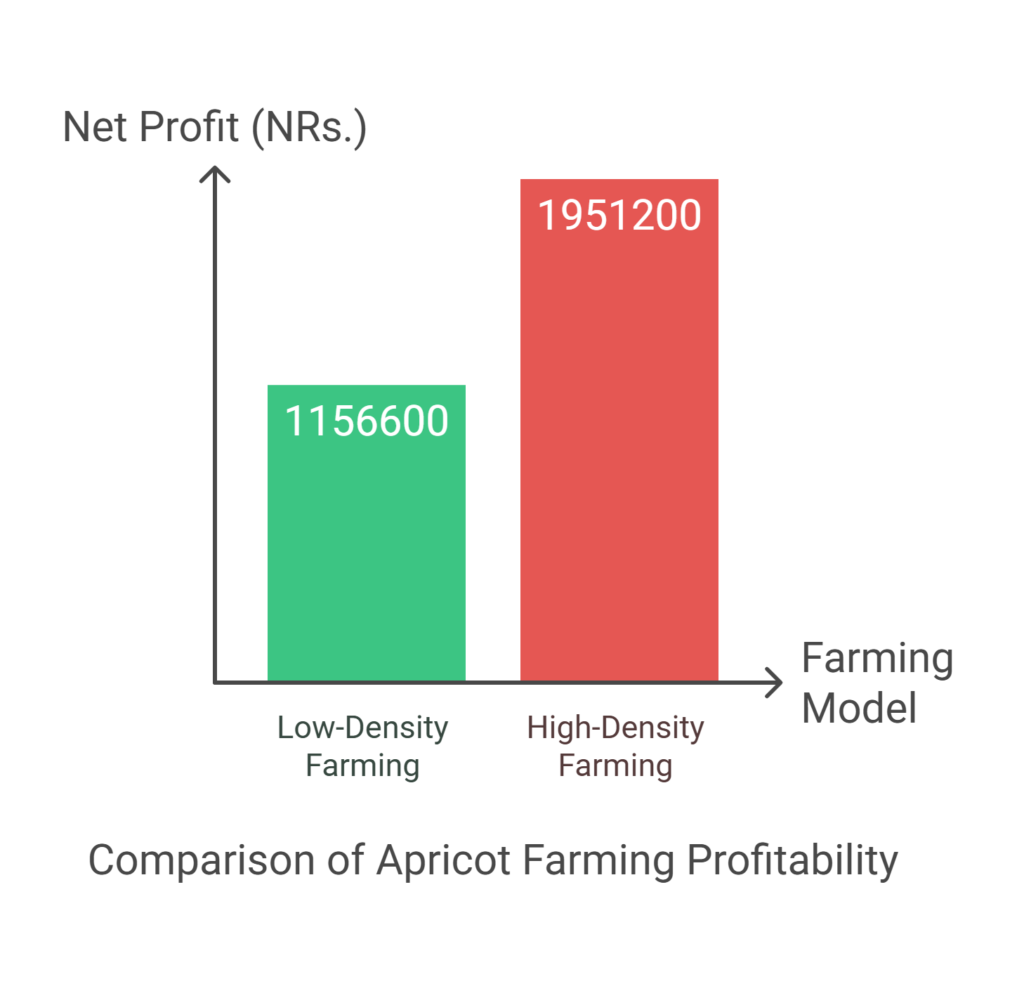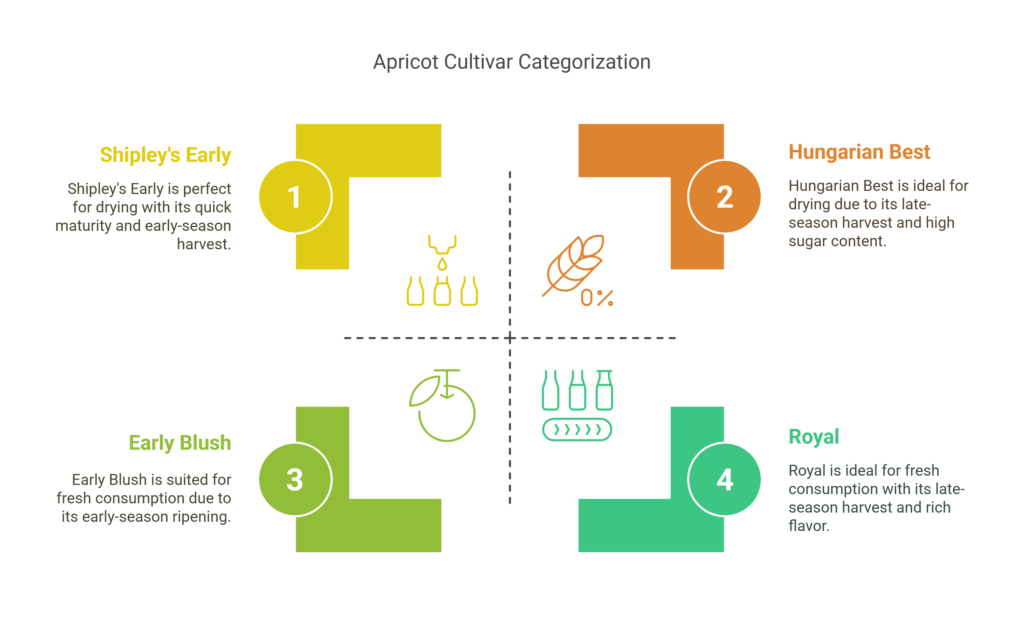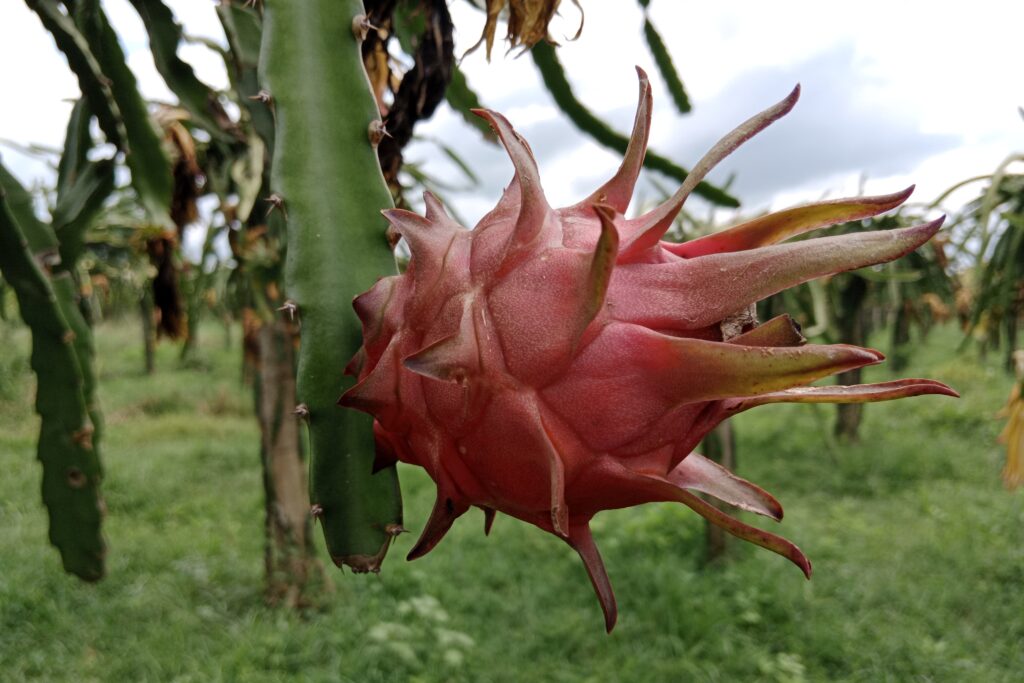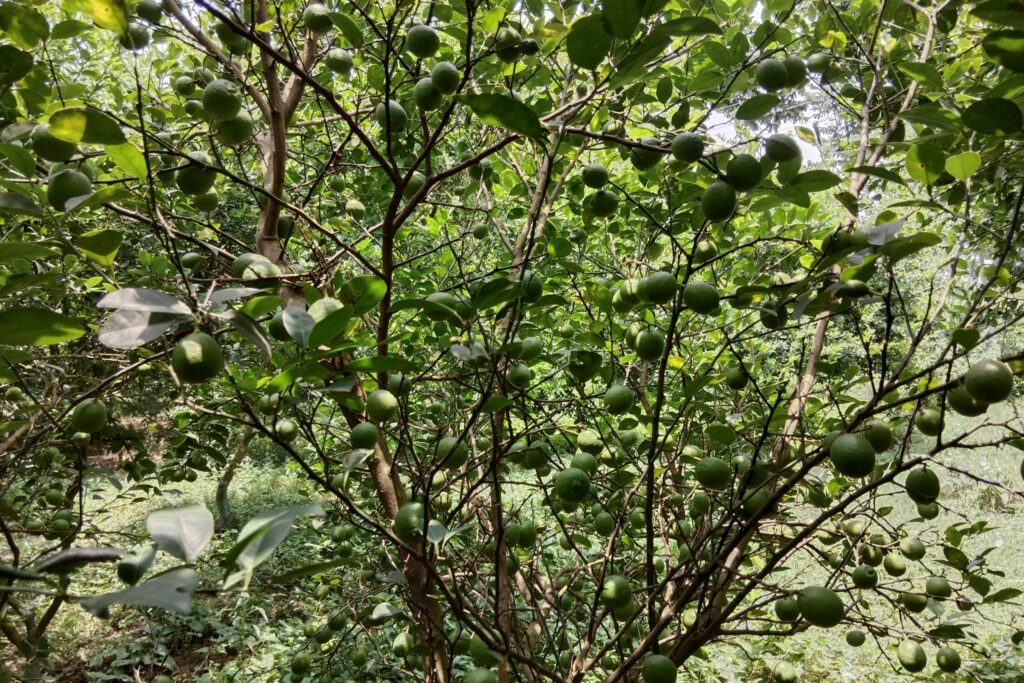Apricot Farming
Apricot (Prunus armeniaca) is a delicious and nutritious fruit that thrives in temperate climates. An analysis of apricot farming profit per acre reveals key differences between low- and high-density planting models. Low-density farming, with 112 plants per acre, generates a total income of approximately NRs. 3,890,000 over 20 years, against a total cost of NRs. 2,733,400 (including an initial investment of NRs. 358,400 and 19 years of maintenance at NRs. 125,000 per year), resulting in a net profit of NRs. 1,156,600 or about NRs. 57,830 annually.

In contrast, high-density farming with 506 plants per acre yields a higher total income of around NRs. 4,530,000 over 15 years, with a total cost of NRs. 2,578,800 (NRs. 828,800 initial and NRs. 1,750,000 in maintenance over 14 years), leading to a net profit of NRs. 1,951,200 or roughly NRs. 130,080 per year. While high-density farming offers 2–3 times higher returns in the early years, it tends to decline after 15 years due to increased risk from plant crowding and disease.
Low-density farming, though slower in generating income, ensures greater long-term stability and is better suited for organic or traditional practices. Both models incur similar annual maintenance costs (NRs. 100,000–150,000) but differ in investment scale and risk. Therefore, high-density farming is ideal for farmers aiming for quick returns in areas with strong irrigation and pest control, whereas low-density farming supports sustainable, long-term orchard health. Additionally, to boost overall returns from apricot farming per acre, farmers should consider diversifying income streams through processing apricots into dried fruit, jam, or juice.
Below is a detailed guide on apricot farming practices:
Land Preparation
Proper land preparation is crucial for successful apricot cultivation, beginning with clearing the field of weeds, rocks, and debris to create a clean planting area. This is followed by deep plowing (30-45 cm) to loosen the soil, improve aeration, and break up hard pans, while leveling ensures uniform water distribution and prevents waterlogging, particularly in heavy soils. Incorporating 10-15 tons/acre of well-decomposed farmyard manure (FYM) or compost enhances soil fertility and structure, providing essential nutrients for young plants.
Additionally, conducting a soil test prior to planting helps determine pH levels, nutrient deficiencies, and overall soil health, allowing for tailored amendments to optimize growing conditions for apricot trees. This comprehensive preparation establishes the foundation for healthy root development and long-term orchard productivity.
Soil Type
For successful apricot cultivation, ideal growing conditions include well-aerated loamy or sandy loam soils rich in organic nutrients, with a preferred soil acidity level between 6.0 and 7.5 pH. These fruit trees are particularly vulnerable to excessive moisture, making them unsuitable for cultivation in dense clay soils, salt-affected areas, or poorly draining sites where water accumulation might lead to root diseases. Selecting appropriate soil with proper water permeability and nutrient-rich composition is fundamental to maintaining tree vitality and ensuring optimal fruit production, as inadequate drainage can severely impact plant health and yield potential.
Climatic Requirements
Apricot trees thrive in temperate climates with distinct seasonal variations, requiring optimal temperatures between 15-35°C and a critical chilling period of 300-900 hours below 7°C for proper bud development and dormancy break.
While moderately drought-tolerant, they perform best with annual rainfall of 700-1000 mm, though irrigation becomes necessary during dry periods, particularly at elevations between 900-2500 meters above sea level where they typically flourish. These stone fruits demonstrate particular sensitivity to frost during flowering and early fruiting stages, making frost-prone locations unsuitable, and prefer warm summer conditions of 20-30°C during active growth and fruit maturation phases for optimal productivity and fruit quality.
Major Cultivars
Popular apricot varieties include:

a). Early Season
Early Blush, New Castle, and Shipley’s Early are popular early-season apricot varieties known for their quick maturity, making them ideal for farmers aiming to capture early market demand. These cultivars typically ripen in late spring to early summer and are best suited to regions with a mild climate and minimal risk of late frosts.
b). Mid-Season
Moorpark, Kaisha, and St. Ambroise ripen in the middle of the growing season and are valued for their balanced sweetness, good flavor, and moderate shelf life. These mid-season apricots are versatile for both fresh consumption and processing, and they perform well in a range of climatic conditions with proper disease management.
c). Late Season
Royal, Tilton, and Harcot are late-maturing varieties that extend the harvest window and are ideal for regions with a longer growing season. These cultivars are appreciated for their large size, rich flavor, and firmness, making them suitable for both fresh markets and processing.
d). Drying Varieties
Hungarian Best and Patterson are specifically favored for drying due to their high sugar content, firm flesh, and excellent drying quality. These varieties yield well and are ideal for farmers interested in value-added apricot products like dried fruit, which offer higher market prices and a longer shelf life.
Planting
a). Planting Season
In temperate regions, apricots are typically planted from late winter to early spring (February–March), while in mild climates, they can also be planted in autumn (October–November).
b). Spacing
For optimal apricot orchard management, spacing varies significantly depending on tree type: standard-sized trees require 6m × 6m spacing (accommodating approximately 112 trees per acre) to allow for their mature canopy development, while dwarf varieties can be planted more densely at 4m × 2m spacing (fitting about 506 trees per acre) due to their compact growth habit, with these spacing recommendations ensuring proper sunlight exposure, air circulation, and efficient orchard operations while maximizing land productivity.
c). Pit Preparation
Proper pit preparation is essential for successful apricot plantation, requiring 1m×1m×1m pits to be dug 2-3 weeks before planting and filled with a nutrient-rich mixture consisting of topsoil blended with 10kg farmyard manure, 500g single super phosphate, 50g neem cake, Trichoderma viride fungus, and biofertilizers containing nitrogen-fixing bacteria, phosphate solubilizing bacteria, and potassium mobilizing bacteria to create an optimal growth environment for young saplings.
d). Planting Method
In order to prevent rootstock sprouting, place the grafted sapling carefully in the middle of the prepared pit. Then, backfill with the enriched soil mixture, gently pressing it around the roots to remove any air pockets. Finally, immediately water the entire area to settle the soil and supply the necessary moisture for the establishment of the newly planted tree.
e). Number of Plants per Acre
The planting density for apricot orchards varies significantly depending on tree type, with traditional standard-sized trees typically planted at 112 trees per acre (6m×6m spacing) to accommodate their mature canopy size, while high-density dwarf varieties allow for 200-250 trees per acre (4m×4.5m spacing) due to their compact growth habit, enabling greater productivity from limited land while requiring more intensive management practices to maintain tree health and fruit quality.
Intercropping
During the initial 3-4 years of apricot orchard establishment before tree canopies fully develop, intercropping with compatible short-duration crops like legumes (beans, peas) or vegetables (onion, garlic) can optimize land use and generate additional income, though farmers should avoid planting water-intensive crops or tall varieties that might compete with young apricot trees for essential nutrients, sunlight, and soil moisture, ensuring the primary fruit trees receive adequate resources for healthy growth and future productivity.
Irrigation
Proper irrigation is crucial for apricot trees at different growth stages to ensure healthy development, optimal fruit production, and water-use efficiency.
a). Irrigation Scheduling
i). Young Plants (1–3 years)
Young apricot plants (1–3 years) require frequent, light watering every 7–10 days to promote healthy root establishment. Since their roots are shallow, they need consistent moisture to support growth, but it’s important to avoid waterlogging, which can harm the plants.
ii). Mature Trees (4+ years)
Mature apricot trees (4+ years) require deep irrigation every 2–3 weeks during dry seasons to encourage deep root growth. It’s important to allow the soil to partially dry between waterings to prevent root diseases and ensure healthy tree development.
b). Critical Growth Stages Requiring Special Attention
Apricot trees have critical irrigation requirements at three key growth stages: during flowering and fruit setting (spring), consistent soil moisture must be maintained to prevent water stress, which can lead to poor pollination, flower drop, and reduced fruit set, though excessive watering should be avoided; in the fruit development stage (summer), adequate irrigation is essential to ensure optimal fruit size and sweetness; and post-harvest (late summer/early autumn), proper watering supports bud formation for the next season’s crop while preventing premature leaf fall and sustaining overall tree vigor.
c). Recommended Irrigation Methods
For optimal water management in apricot cultivation, drip irrigation stands as the most efficient method, conserving 30-40% more water than flood irrigation by delivering targeted moisture directly to the root zone while minimizing weed growth and evaporation, making it particularly suitable for sloped terrain or water-scarce areas; alternatively, basin irrigation serves as a traditional approach better suited for young orchards though less effective for mature trees, while sprinkler systems offer limited utility mainly during early growth stages but carry increased risks of promoting fungal diseases due to foliage wetting.
d). Signs of Improper Irrigation
Apricot trees clearly display distress signals when irrigation is mismanaged: overwatering manifests through yellowing leaves, root rot development, and inferior fruit quality, while underwatering triggers visible wilting, premature fruit drop, and significantly stunted growth – both conditions critically impair tree health and productivity, necessitating careful water regulation for optimal orchard performance.
e). Water Conservation Tips
To enhance water efficiency in apricot cultivation, implement mulching with organic materials like straw or dry leaves to maintain soil moisture, adopt rainwater harvesting systems to supplement irrigation needs, and utilize soil moisture sensors for precise watering schedules – these conservation strategies collectively optimize water use while sustaining tree health and productivity.
Fertilizer and Manure
| Growth Stage | Fertilizer Recommendation (per tree/year) |
| Year 1 | 10 kg FYM + 100g N + 50g P + 50g K |
| Year 2-3 | 15 kg FYM + 200g N + 100g P + 100g K |
| Mature Trees (4+ years) | 20–25 kg FYM + 500g N + 250g P + 250g K |
For optimal apricot tree nutrition, fertilizers should be applied in three split doses during key growth phases – in March (pre-flowering), July (fruit development), and October (post-harvest recovery) – while supplementary zinc and boron foliar sprays enhance fruit quality by addressing critical micronutrient deficiencies during critical growth stages.
Weed Control
Effective weed management in apricot orchards combines organic mulching with straw or leaves to simultaneously suppress weeds and conserve soil moisture, supplemented by regular mechanical weeding through careful hoeing around tree bases, while targeted glyphosate applications (applied precisely to avoid tree contact) offer chemical control for persistent weed problems – this integrated approach maintains orchard cleanliness while protecting tree health.
Pest and Disease Management
Major Pests
a). Flat head borer
Flat-headed borers primarily target weakened or damaged apricot trees, infesting areas affected by sunburn, scale insects, bacterial canker, or fresh pruning wounds where adult beetles lay their eggs. Upon hatching, the larvae create extensive feeding galleries beneath the bark, tunneling deep into the heartwood while packing their cavities with fine sawdust residue – initial infestations manifest as oozing sap patches that later develop into bark cracks exposing the larval mines.
These destructive pests pose severe threats to orchard health, capable of killing bark sections on mature trees while completely girdling and destroying young specimens, with newly grafted trees in established orchards being particularly vulnerable to devastating attacks that compromise both tree structure and productivity.
b). Brown apricot scale
The brown apricot scale causes direct damage by inserting its stylet mouthparts during feeding, leading to premature leaf drop, twig dieback, and potentially host death in severe infestations, while the copious honeydew excretions promote sooty mold growth that further stresses the plant. Natural control is provided by coccinellid beetles (ladybugs), which prey on these destructive scales, helping to maintain population balance in apricot orchards.
c). Leaf curling aphid
The leaf-curling aphid inflicts severe damage by colonizing young shoots, buds, grafts, and saplings, where both nymphs and adults sap vital plant nutrients from leaves, shoots, and developing fruits, leading to characteristic tightly curled leaves, wilting terminal shoots, and stunted tree growth.
These destructive pests thrive most during spring months when their populations peak, though natural biological controls including predatory beetles (Scymnus sp., Chilomenes sexmaculatus, coccinellids), lacewings (Chrysoperla zastrow sillemi), predatory mites, and parasitic wasps help regulate infestations in apricot orchards.
Management
- Spray Neem oil 3ml / litre water.
- Spray imidacloprid 1 ml / litre water.
- Biological controls including predatory beetles (Scymnus sp., Chilomenes sexmaculatus, coccinellids), lacewings (Chrysoperla zastrow sillemi), predatory mites, and parasitic wasps.
d). Birds & Bats
Control birds and bust by using netting or reflective tapes.
Major Diseases
a). Brown Rot (Fungal)
The blossom and twig blight disease initially manifests through dying young blossoms, associated spurs, and leaves, with infections progressing into twigs to form distinctive cankers featuring tan centers encircled by dark margins, often accompanied by gum exudation at flower bases, while high humidity promotes gray-brown spore masses on infected tissues. The causal fungus persists on infected twigs and mummified fruits (both on trees and ground), disseminating via airborne spores, rain splash, and insect vectors, with moderate temperatures combined with moist bloom-period conditions creating ideal circumstances for devastating blossom blight outbreaks in apricot orchards.
Management
- Spray Copper-based fungicides
- Proper pruning for air circulation.
b). Powdery Mildew
Powdery mildew infection in apricots appears as a distinctive weblike white fungal growth on fruits, leaves, and stems, with older fruit lesions developing scabby patches, while affected foliage shows yellowing, distortion, and stunted shoot growth that reduces overall yield.
The characteristic white powdery residue visible on plant surfaces consists of fungal mycelium and spores of Sphaerotheca pannosa, which uniquely overwinters on nearby rose bushes rather than apricot trees, making springtime removal of adjacent roses crucial to eliminate primary inoculum sources. This disease thrives particularly during dry late-winter conditions when temperatures favor spore germination and spread, creating ideal circumstances for epidemics that can significantly impact orchard productivity.
Management
- Spray Sulfur based fungicide
- Grow resistant varieties.
c). Silver Leaf and Canker
Silver Leaf disease progressively kills apricot trees branch by branch, with affected leaves developing a characteristic silvery appearance due to fungal toxins in the wood, while internal brown staining occurs in the vascular tissue – though the fungus often remains invisible externally until infected branches die, when bracket-like toadstools (8mm-5cm wide) emerge through the bark.
This true fungal disease is frequently confused with False Silver Leaf (caused by environmental stresses like malnutrition, cold, or irregular watering), which shows similar leaf silvering but affects the entire tree uniformly without internal staining.
The pathogenic fungus spreads via airborne spores released from fruiting bodies on dead wood during damp autumn/winter months, primarily infecting through pruning wounds or other injuries before growing downward through the vascular system and ultimately killing the wood while producing diagnostic dark stains.
Management
- Prune infected branches.
- Apply copper sprays.
Harvesting
Apricot trees typically begin bearing fruit 3-4 years after planting, reaching full production capacity by 6-7 years, with the harvest season generally falling between May and July depending on regional climate and specific cultivar. Ripe fruits are identified by their transition from green to yellow-orange coloration, a slight softness when gently pressed, and development of a sweet fragrance, requiring careful hand-picking to prevent damaging the delicate fruit.
Yield potential progresses significantly with tree maturity, starting at 10-20 kg per young tree and increasing to 50-80 kg for established trees, translating to 4-8 metric tons per acre in well-managed orchards, with proper harvesting techniques being crucial for maintaining fruit quality and market value.
Cost of Investment for Apricot Farming Per Acre (NRs.)
High-density apricot planting demands approximately 2.3 times higher initial investment compared to low-density systems, primarily due to the increased number of saplings, greater irrigation needs, and higher labor requirements. A major cost component is the drip irrigation system, accounting for about 42% of the total cost in low-density plantations and 36% in high-density ones. Additionally, expenses for saplings and fertilizers are substantially higher in high-density farming, contributing further to the elevated upfront costs.
| S.N. | Categories | Low-Density (NRs.) | High-Density (NRs.) |
| 1 | Land Preparation (Plowing, Leveling, Pit Digging) | 40,000 | 50,000 |
| 2 | Apricot Saplings | 33,600 | 151,800 |
| 3 | Fertilizers & Manure | 44,800 | 177,000 |
| 4 | Irrigation System (Drip Setup) | 150,000 | 300,000 |
| 5 | Labor Costs (Planting & Maintenance) | 30,000 | 50,000 |
| 6 | Pest & Disease Control | 30,000 | 50,000 |
| 7 | Miscellaneous (Equipment, Mulch, etc.) | 30,000 | 50,000 |
| Total Initial Investment | 358,400 | 828,800 |
Annual maintenance Cost
The annual maintenance cost for apricot farming from the second year onwards ranges between NRs. 100,000 to 150,000 per acre, and this estimate applies to both low-density and high-density planting systems.
Income from Apricot Farming Per Acre
High-density apricot farming generates significantly higher early income (3rd–8th year) due to greater plant numbers, while low-density farming offers more stable, long-term yields (9th–20th year).
However, high-density orchards experience faster yield declines after 15 years due to crowding and disease susceptibility, whereas low-density orchards maintain productivity longer. Additionally, price increases in later years (reaching NRs. 200/kg) enhance profitability, particularly for low-density systems with sustained output. This makes high-density planting ideal for short-term gains, while low-density is better for long-term, sustainable returns.
| Year | Low-Density Yield (kg/acre) | High-Density Yield (kg/acre) | Rate (NRs./kg) | Low-Density Income (NRs.) | High-Density Income (NRs.) |
| 3rd Year | 700 | 1,700 | 150 | 105,000 | 255,000 |
| 4th Year | 1,400 | 3,000 | 150 | 210,000 | 450,000 |
| 5th Year | 2,000 | 5,000 | 150 | 300,000 | 750,000 |
| 5-8 Years | 4,500 | 8,500 | 150 | 675,000 | 1,275,000 |
| 9-16 Years | 6,000 | 6,000 | 200 | 1,200,000 | 1,200,000 |
| 17-20 Years | 4,500 | 3,000 | 200 | 900,000 | 600,000 |
| 21+ Years | 2,500 | 0 | 200 | 500,000 | 0 |
Analysis of Profit of Apricot Farming Per Acre
a). Low-Density Farming (112 Plants/Acre)
Over a 20-year period, low-density farming with 112 plants per acre generates a total income of approximately NRs. 3,890,000. The total cost, including an initial investment of NRs. 358,400 and maintenance expenses of NRs. 2,375,000 over 19 years (at NRs. 125,000 per year), amounts to NRs. 2,733,400. This results in a net profit of NRs. 1,156,600, averaging around NRs. 57,830 per year.
b). High-Density Farming (506 Plants/Acre)
High-density farming with 506 plants per acre yields a total income of approximately NRs. 4,530,000 over 15 years. The total cost, comprising an initial investment of NRs. 828,800 and maintenance expenses of NRs. 1,750,000 over 14 years (at NRs. 125,000 per year), sums up to NRs. 2,578,800. This results in a net profit of NRs. 1,951,200, averaging about NRs. 130,080 per year.
c). Comparative Analysis
Low-density farming requires a lower initial investment (NRs. 358,400) compared to high-density farming (NRs. 828,800), and while it offers lower early income during the first 3–8 years, it provides better long-term stability with profitability sustained over 20+ years. In contrast, high-density farming delivers 2–3 times higher early returns but sees a decline after 15 years.
Both methods have similar maintenance costs ranging from NRs. 100,000 to 150,000 per year. Over their respective periods, low-density farming yields a total profit of NRs. 1.15 million in 20 years, whereas high-density farming generates NRs. 1.95 million in 15 years. However, the risk factor is lower in low-density farming due to longer plant lifespan, while high-density farming carries higher risks associated with crowding and disease. Therefore, high-density farming is more suitable for short-term profit, whereas low-density farming is better for long-term sustainability.
D). Recommendations
High-density farming is recommended for farmers seeking quick returns and for regions with reliable irrigation and effective pest control, while low-density farming is more suitable for organic and traditional farming practices, offering greater long-term orchard stability. To enhance profitability, farmers are also encouraged to diversify their income by processing apricots into value-added products such as dried fruit, jam, or juice.
Conclusion
Apricot farming requires proper land preparation, irrigation, nutrient management, and pest control. Selecting the right cultivar and maintaining optimal growing conditions ensures high-quality fruit production. With good care, apricot trees can remain productive for 20–25 years.


